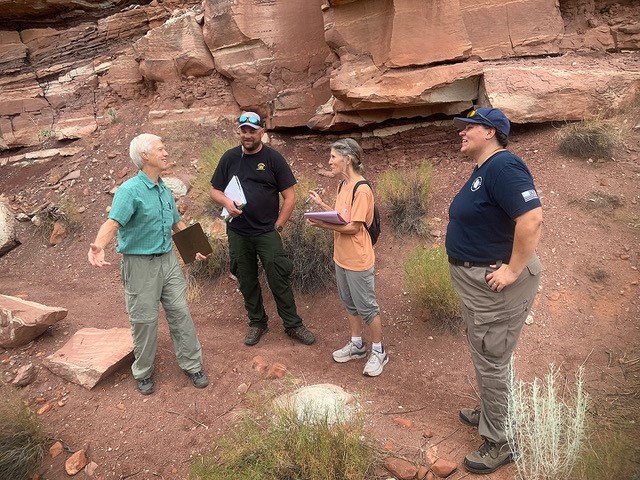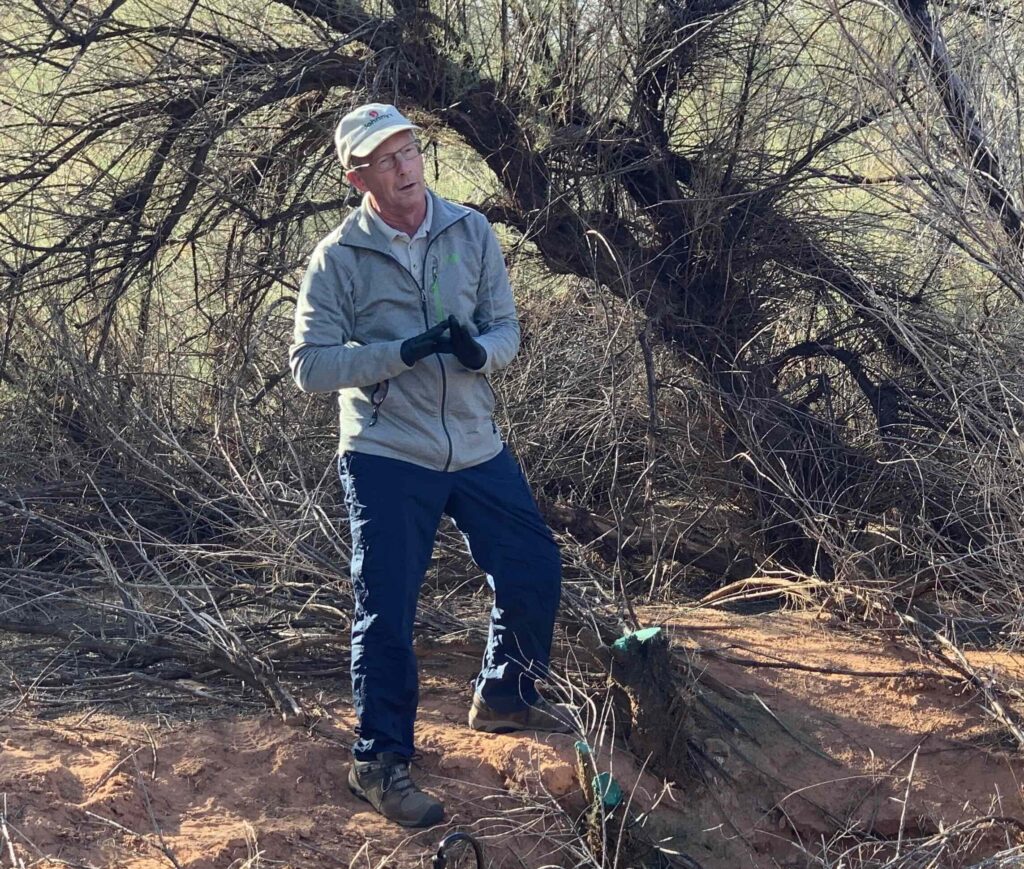
What We've Learned: It Takes a Team
April 2023
Folks dedicated to maintaining the health and beauty of the natural environment face multiple challenges. It’s not just as simple as finding a problem and going out and fixing it. For example, what’s a problem in one person’s eyes, may not be so in another’s. Or, if parties agree that there is a problem, what’s the best way to address it?
The Desert Preservation Initiative (DPI) is committed to the study and, when needed, the restoration of our native desert ecosystem using scientifically proven methodologies. As DPI volunteers have begun to remove tamarisk in the Santa Clara watershed, outreach to government partners for assistance and support has been critical to moving forward in a responsible and effective way.
As DPI’s volunteers soon learned, there are a myriad of agencies, state, regional, and local, whose work and/or interests overlap with what DPI does. Reaching out, “We found direct support, helpful professional training and advice, and, very simply, new and rewarding relationships,” says botanist Terrence Walters, DPI secretary.
DPI found both scientific and practical support for its mission. “We found support for tamarisk removal from local fire agencies,” says Chuck Warren, DPI president, “from Andrew Parker, Fire Chief of Clara Ivins Fire and Rescue, and from John Schmidt, Wildland-Urban Interface Specialist, Dept. of Natural Resources, Division of Forestry, Fire and State Lands, both of whom see tamarisk removal as essential to fire risk reduction.”
Volunteers were the beneficiaries of training workshops on safety procedures and gear along with the proper handling and application of herbicide from supporters such as Amy Davidson, a Compliance Specialist in the Pesticide Program of the Utah Department of Agriculture and Food, who believes “the tamarisk removal process is way overdue, especially with our water situation.” “Having these experts conduct workshops creates a real comfort level for our volunteers who are putting in the hours and the physical labor to get this work done,” says Dan Beck DPI vice-president and volunteer coordinator.
DPI also received direct assistance from Joseph Rawlinson, Ivins City Arborist, and Heber Heyder, Washington County Emergency Services Fire Warden, who brought equipment and crews to help chip tamarisk debris at the DPI chipping corral in the Ivins community of Kayenta.
DPI President Chuck Warren and Secretary Terrence Walters have driven outreach to these agencies. These connections have led the DPI team to new resources and have identified grant opportunities. And these conversations have increased our understanding of the complexities that face governmental agencies at all levels, from staffing limits to managing related environmental issues, such as wildlife, that need to be taken into consideration. Conversations are ongoing with the cities of Ivins and St. George, both of which address the need to remove tamarisk.
“It’s thrilling to know that so many people working at so many levels of government are interested in and invested in the work we do to preserve the natural habitat of the Southwestern desert,” says Warren. “When you take on a project this big, it feels good that we can tackle it as part of a true team effort.”

